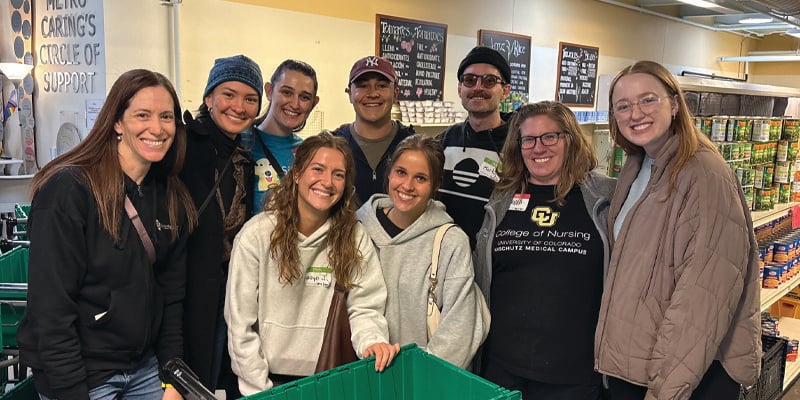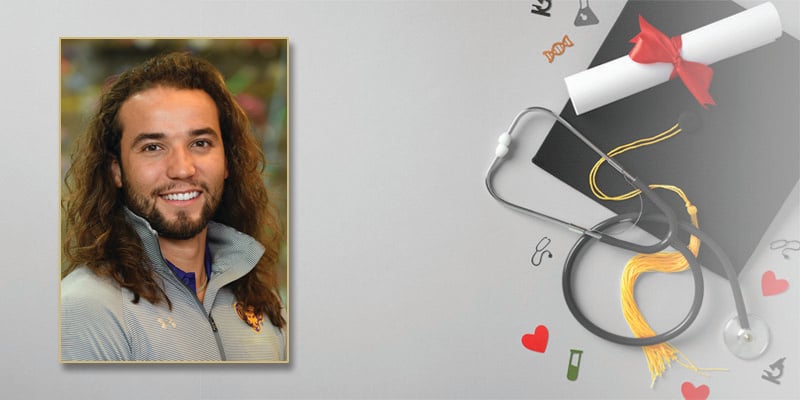Between residing in various rugged locations and earning numerous nursing-related degrees, diabetes has been a constant in Alicia Le Pard’s life.
First wrongly diagnosed with type 2 diabetes at 17, then later diagnosed with type 1 diabetes, Le Pard (ARNP) worked as a paramedic until her mid-30s before deciding to become a nurse.
“It wasn’t until I was 35 going onto 40 when I decided that I needed a backup career because slinging bodies across the highway in sub-zero weather at 3 a.m. wasn’t a great life for an older female,” she says.
Putting diabetes in perspective
Currently living in Gillette, Wyo., Le Pard made insulin resistance the focus of her dissertation research at the University of Colorado College of Nursing’s Doctor of Philosophy (PhD) in Nursing program in the Bio-behavioral track. She graduates from the mostly virtual program in December, 2022.
Le Pard aspires to change how people think about diabetes, which she views as a manageable chronic condition rather than a debilitating family curse.
“I don’t remember life without diabetes in it,” she says. “Even before I was diagnosed, I remember giving my mother her insulin shots when I was 7 years old.”
Diabetes ultimately contributed to Le Pard’s mother’s death by kidney failure at 56. Relatives on both sides of Le Pard’s family tree had their lives cut short because of health conditions associated with the disease. She also notes that the disease is frequently stigmatized and misunderstood by the general population and even healthcare professionals.
“At one point, an endocrinologist told me I couldn’t be a paramedic because I needed a 9-to-5 job that would align with my medication schedule,” she says. “I told him, ‘You’ve got to help me figure out how to live my life with this disease, not how to make this disease live a life.’ I think that became the impetus for everything I do now.”
A remote-learning pioneer
Originally from Michigan, Le Pard’s paramedic career took her everywhere from Alaska to Las Vegas and an island in the middle of the Pacific Ocean. While working on a chemical weapons demilitarization site on a Pacific Island in 1993, she enrolled in an all-distance learning curriculum.
“That was in the days before computers, so you had to write your paper, mail it in and wait for your grade to come by snail mail, which was always longer on a military base,” she says. “That’s essentially how I tested out of nursing school.”
Coming back to the U.S., she decided to earn her bachelor’s degree through another all-distance curriculum. Later, she enrolled in a master’s program after settling in northeastern Wyoming.
“Almost all of my schooling has been through a non-traditional format,” she says.
While working in various hospitals in northeastern Wyoming and South Dakota, she also obtained an MBA in healthcare administration.
Despite these credentials, Le Pard says her career did not “level up” the way she wanted.
“One day, I decided that I should become a nurse practitioner,” she says. “So, I put myself through nurse practitioner school as an acute care provider. The hospital didn’t know what to do with me, so I went back to school again to become a family nurse practitioner through the University of Massachusetts Boston, working on a doctorate in nursing practice.”
Research work at CU Nursing
Le Pard started but didn’t finish two higher-learning degrees while working at her self-owned clinic in Gillette. However, she continued the groundwork she started on that original research project when she enrolled in CU Nursing’s PhD program in 2018.
“I’ve had a theory that some people with diabetes may have a different presentation of insulin resistance,” she says. “Insulin resistance is a spectrum disorder, not just a singular thing. The reality is that we know there are genetic abnormalities that we classify as severe or extreme insulin resistance – why wouldn’t there be a spectrum from the insulin resistance seen during pregnancy and illness into the insulin resistance of type 2 diabetes and beyond? We tend to blame the patient because the patient isn’t doing what we told them to do – and that’s why their blood sugar levels aren’t responding. I wanted to suggest there is something else going on.”
Using a secondary data analysis from UCHealth’s Compass database, Le Pard’s dissertation evaluated 17 variables between anthropomorphic, biochemical and demographics data (including race, ethnicity and location) for roughly 5000 people who had a diagnosis of people with type 2 diabetes who were on insulin.
“I hope to open up healthcare providers’ minds to the fact that everything within diabetes’ insulin resistance is a spectrum disorder. It is not binary,” she says.
Life after CU Nursing
Despite winding down her PhD studies, Le Pard will remain busy for the foreseeable future. Along with running an internal-medicine private practice in Wyoming, she works as an emergency hospitalist in a small critical-access hospital in Montana. She spent two years doing COVID-19 response work for the National Disaster Medical System. She considers the foundation of diabetes research that she collected at CU Nursing to be among the most important work of her life.
“Diabetes can certainly kill you, but we’re all going to die,” she says. “I care more about losing my feet, or eyesight or other things. At the end of the day, I want to change the attitudes about diabetes for both the healthcare providers and the patients. You can live with diabetes and sort of embrace it. It’s not a stigma – it’s who you are and something you can take care of.”
Her advice to future PhD students at CU Nursing: “Listen to the voices in your head that wonder at the complexities of the world. Never let the naysayers hold you back from finding answers.”



